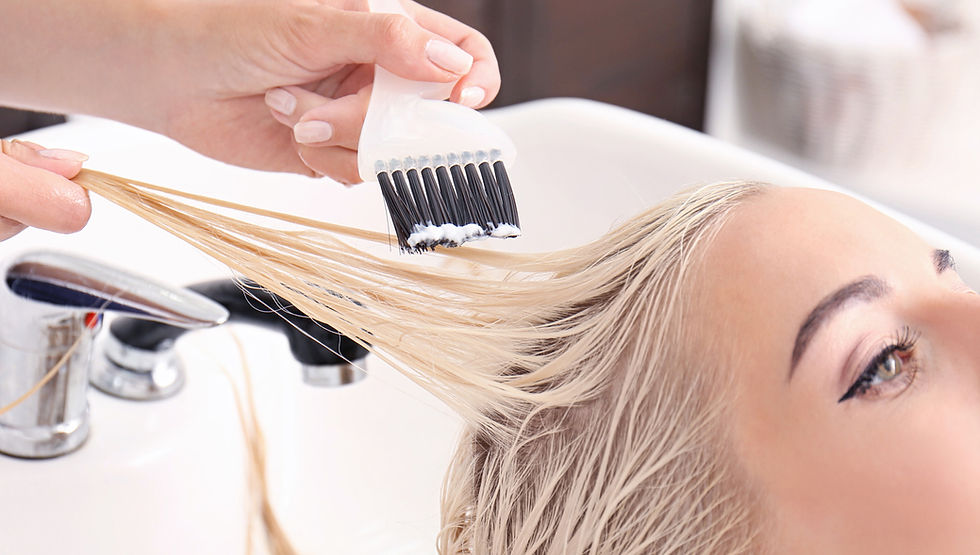
Have you ever wanted to change up your looks, maybe go blonde or just take a risk and dye your hair blue or pink? There is actually chemistry behind the hair dying process. Your natural hair color depends on the ratio of eumelanin(black and brown shades) and phaeomelanin(blonde, ginger, and red shades). When these proteins are absent the hair is usually a white, or gray color. Some hair coloring products actually contain chemicals that can irritate your skin, eyes, and some dyes are even linked to cancer. Ammonia (NH3) and hydrogen peroxide (H2O2) are used in these hair coloring products.
The hydrogen peroxide bleaches out the natural color of the hair and releases oxygen, so that chemical reactions can take place. Bleach is used to lighten hair and reacts with the melanin in your hair. It removes the color through irreversible chemical reactions. Bleach reacts more with darker pigments. The peroxide breaks chemical bonds in hair, releasing sulfur, and the new permanent color is bonded to the hair.
While, ammonia breaks the outer cuticle of the hair allowing the dye to interact with the hair, which allows for a color change. These chemicals can damage the hair and also be irritating to the skin, eyes, etc. If you do get allergic reactions from the hair dye, a way to prevent that is by leaving your hair unwashed for a few days before going to your appointments so that the natural oils can protect your scalp from the irritants.
Comments